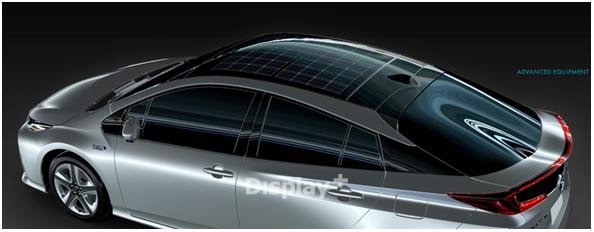If you stay updated with Tesla co-founder and CEO Elon Musk’s musings, then you might remember that he once talked about a solar roof variant of the Model 3 on Twitter last year. At the time, the masses were pretty divided about the same being true due to the non-existence of such solar technology. But, Panasonic, a long time supplier for Tesla, seems to have come through with a new solar roof tech in tow.
@John_Gardi We will probably offer that as an option
— Elon Musk (@elonmusk) November 4, 2016
Panasonic recently unveiled its new technology called HIT Photovoltaic Module for Automobile, solving the power generation issue in solar roofing for vehicles. Earlier, we had been faced with the glaring problem that solar panels atop the vehicles don’t generate enough electricity to power much of anything. Panasonic integrated its solar cells in the roof of a Toyota Prius PHV last year, but it could only generate 50W. This was enough to power just the fans for the AC in the vehicle.
But, the Japanese technology giant has now developed a new solar roof product with the ability to generate 180W power. This module is the first-ever to successfully be able to generate enough power to charge an electric vehicle powertrain and other 12V batteries. This new solar roofing technology is particularly intriguing as it has the ability to charge lithium-ion batteries that make the powertrain in Tesla vehicles.
Panasonic has described the technology in its official blog post as under:
Panasonic’s solar cells have a unique structure that combines a crystalline silicon substrate and an amorphous silicon film, and feature high conversion efficiency and excellent temperature characteristics.
Conventional automotive solar cells can output up to several tens of watts and have been used only for the auxiliary charging of 12 V batteries and ventilation power sources for parked cars; however, the use of the features of Panasonic’s solar cells allow a high output (approx.180 W) in a limited area on a car’s roof, enabling the charging of the drive lithium-ion batteries as well as 12 V batteries, resulting in a possible extension of an EV’s travel distance and increased in fuel economy.
This new technology has currently only been launched for the new Prius Prime, but the company hints that the said technology would eventually make its way to other electric vehicles in the coming years. This means that a Model 3 with the solar roof will actually be an option available for people to choose from – but may be in the near future. Yes, it would take time as the said module isn’t as capable as we might have imagined. At the moment, it is only leading to a 10 percent increase in the car’s operational efficiency, which adds ~2 miles tops to an electric vehicle’s range — which is also questionable.
Panasonic is highly optimistic about the success of this technology and will continue to work on the advancement of its solar roof solution. It might also bring in Tesla to advice and participate in the development of the same at their Buffalo solar plant, which is being run co-jointly by them. Panasonic has recently pumped in a massive $256 million into the said operations and plans to begin production of SolarCity’s next-gen classy solar roof panels later this year. Also, Model 3 production and shipments are scheduled to begin in a couple months. So, stay tuned!
The Tech Portal is published by Blue Box Media Private Limited. Our investors have no influence over our reporting. Read our full Ownership and Funding Disclosure →







1 comment